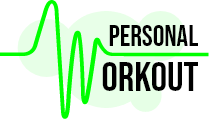What is EMS training and does it deliver on its promises?
EMS training, with or without a suit, has established itself worldwide and is now more than just a trend in the fitness industry. But what exactly is EMS training and what data is available? We wanted to find out for ourselves and explain the results of our research in this blog post.
What is EMS Training?
EMS stands for electro-myo-stimulation, where “myo” stands for muscle. Muscles are specifically stimulated to contract using low frequency stimulation current. When the impulse is reduced or stopped, the muscles relax. The impulses are varied in amplitude, range, and spacing, thus varying the intensity of the workout.
There are suits with built-in electrodes and electrodes that are applied directly to the skin.
Electrotherapy originated in physiotherapy in the 1970s. It was mainly used to treat pain with TENS (transcutaneous electrical nerve stimulation), or EMS was used for rehabilitation after injuries and surgery. It has only been used in “popular sports” since the 90s.
EMS studios advertise the short duration of training (20 minutes maximum) and the good results they claim to achieve. But do they deliver what they promise?
Effects of EMS training on health-related markers
Several studies show that EMS training can indeed produce positive results.
A review of 14 studies found significant positive changes from EMS training in muscle mass and function, as well as reductions in back pain and body fat percentage.
Another study compared EMS with HIT in 48 untrained men between the ages of 30 and 50. Both groups achieved positive changes in leg and back strength, muscle mass, and body fat percentage, although the HIT group achieved slightly more than the EMS group.
Another study of 110 patients with chronic back pain came to the same conclusion. Both the EMS group and the classically trained group were able to reduce their pain.
This meta-analysis of 16 studies also found significant changes in muscle mass and strength, but not in body fat percentage.
This study looked at EMS in cardiac patients. Same results as above. Improvement in muscle mass and other health-related markers, but not in body weight.
Athletes have also benefited from EMS training, as shown in this study and this one.
There are many other studies. The picture is relatively consistent: although EMS does not perform better than conventional training, it certainly has potential for those who want to exercise as little as possible or spend as little time exercising as possible, or for people who are currently inactive due to injury or surgery, or who need to take care of their heart. Athletes can also benefit from EMS as a supplement.
However, the conclusion that “the more creatine kinase, the better the training stimulus” is not true. CK is an enzyme that is produced during intensive strength training and especially during EMS training. However, high levels of this enzyme are actually detrimental to health (see below).aining und besonders beim EMS Training gebildet wird. Dies ist aber in hohen Mengen sogar gesundheitsschädlich (siehe gleich).
Is EMS training safe?
When used correctly, EMS training is safe. The impulses do not come from the brain, but the muscles don’t care. However, because the stimulus comes from the outside, a muscle can be overloaded or damaged more quickly. Therefore, it is important not to overdo it.
As mentioned above, very high CK levels can occur, which can damage the kidneys or even lead to rhabdomyolysis. However, this is very rare. People with pacemakers are advised against EMS training.
Conclusion – The pros and cons of EMS training at a glance
First of all, we at Personalworkout are not fans of EMS training. We all prefer to train conventionally. However, we do have such a machine, but we only use it for pain management or recovery (e.g. very hard, long cycling sessions).
Disadvantages of EMS Training
- EMS training is not natural training, where, unlike EMS, hundreds of muscles must respond in a coordinated manner to a voluntary stimulus from the brain. Conventional training involves more functional training, including the cardiovascular system. Depending on the exercise, coordination skills such as balance are also trained. This type of strength training is highly applicable to everyday life and other athletic activities.
- Although athletes such as Ronaldo appear in the media with such EMS machines, EMS training is not very well established in the field of athletics. Bodybuilders also train “properly”. There must be reasons for this. If EMS training could produce the same or better results in a shorter period of time, this would probably be different.
- EMS training is relatively expensive. A 20-minute session costs between CHF 40 and CHF 100, depending on the length of the subscription.
- EMS studios require very little space, no expensive equipment and the staff is trained very quickly. This makes EMS training lucrative for providers. However, just because there are a lot of them does not mean that they are better.
Nevertheless, EMS training has its advantages
- This gives people who don’t like to exercise the opportunity to do something for their fitness in a short period of time.
- The fact that many electrodes can be applied at the same time means that many muscle groups can be trained at the same time, resulting in the time savings mentioned above.
- EMS training can certainly produce positive results, as several studies have shown.
- EMS training can be used as a supplement or on its own, i.e. during injury breaks, to help build or maintain muscle and can therefore be useful in rehabilitation. People with health problems or pain can also benefit from EMS training, as several studies have shown.
For my best tips on conventional strength training, check out our free training guide (GERMAN).
Challenge of the Month
What Clients Say





















